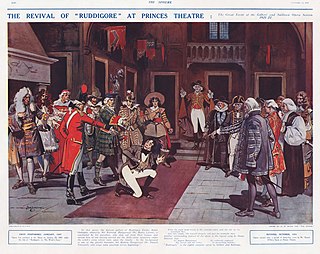
Ruddigore; or, The Witch's Curse, originally called Ruddygore, is a comic opera in two acts, with music by Arthur Sullivan and libretto by W. S. Gilbert. It is one of the Savoy Operas and the tenth of fourteen comic operas written together by Gilbert and Sullivan. It was first performed by the D'Oyly Carte Opera Company at the Savoy Theatre in London on 22 January 1887.

Dame Ninette de Valois was an Irish-born British dancer, teacher, choreographer, and director of classical ballet. Most notably, she danced professionally with Serge Diaghilev's Ballets Russes, later establishing the Royal Ballet, one of the foremost ballet companies of the 20th century and one of the leading ballet companies in the world. She also established the Royal Ballet School and the touring company which became the Birmingham Royal Ballet. She is widely regarded as one of the most influential figures in the history of ballet and as the "godmother" of English and Irish ballet.

Sir Robert Murray Helpmann CBE was an Australian ballet dancer, actor, director, and choreographer. After early work in Australia he moved to Britain in 1932, where he joined the Vic-Wells Ballet under its creator, Ninette de Valois. He became one of the company's leading men, partnering Alicia Markova and later Margot Fonteyn. When Frederick Ashton, the company's chief choreographer, was called up for military service in the Second World War Helpmann took over from him while continuing as a principal dancer.
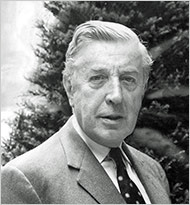
Sir Frederick William Mallandaine Ashton was a British ballet dancer and choreographer. He also worked as a director and choreographer in opera, film and revue.
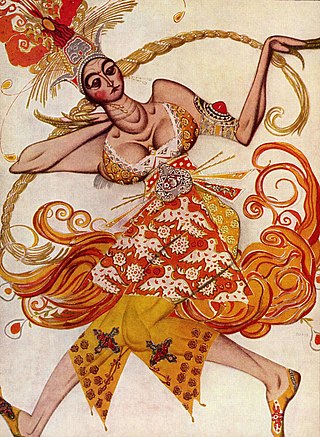
The Firebird is a ballet and orchestral concert work by the Russian composer Igor Stravinsky. It was written for the 1910 Paris season of Sergei Diaghilev's Ballets Russes company; the original choreography was by Michel Fokine, who collaborated with Alexandre Benois on a scenario based on the Russian fairy tales of the Firebird and the blessing and curse it possesses for its owner. It was first performed at the Opéra de Paris on 25 June 1910 and was an immediate success, catapulting Stravinsky to international fame. Although designed as a work for the stage, with specific passages accompanying characters and action, the music achieved equal if not greater recognition as a concert piece.
Job: A Masque for Dancing is a one act ballet produced for the Vic-Wells Ballet in 1931. Regarded as a crucial work in the development of British ballet, Job was the first ballet to be produced by an entirely British creative team. The original concept and libretto for the ballet was proposed by the scholar Geoffrey Keynes, with choreography by Ninette de Valois, music by Ralph Vaughan Williams, orchestrations by Constant Lambert and designs by Gwendolen Raverat. The ballet is based on the Book of Job from the Hebrew Bible and was inspired by the illustrated edition by William Blake, published in 1826. Job had its world premiere on 5 July 1931, and was performed for members of the Camargo Society at the Cambridge Theatre, London. The first public performance of the ballet took place on 22 September 1931 at the Old Vic Theatre.
Dame Catherine Margaret Mary Scott, was a South African-born pioneering ballet dancer who found fame as a teacher, choreographer, and school administrator in Australia. As the first director of the Australian Ballet School, she is recognised as one of the founders of the strong ballet tradition of her adopted country.

Edward Geoffrey Toye, known as Geoffrey Toye, was an English conductor, composer and opera producer.
Nadia Nerina was a South African dancer who was "one of the most gifted, versatile, and inspiring ballerinas of The Royal Ballet" during the 1950s and 1960s. She was known "for her technical virtuosity, lightness afoot, effortless-seeming jumps, and joyful charm onstage, especially in comedic roles."
David Poole was a South African ballet dancer, choreographer, teacher, and company director. During his thirty-year association with dance companies in Cape Town, he had "a profound effect on ballet in South Africa. He is internationally recognised as a significant figure in the world of dance.
Adam Zero is a ballet with music composed by Arthur Bliss and choreographed by Robert Helpmann in 1946.
Les Rendezvous is a plotless one-act ballet created in 1933, with choreography by Frederick Ashton to the music of Daniel Auber arranged by Constant Lambert and with designs by William Chappell. It was the first major ballet created by Ashton for the Vic-Wells company.
Beryl May Jessie Toye,, known professionally as Wendy Toye, was a British dancer, stage and film director and actress.
Miracle in the Gorbals (1944) is a one-act ballet choreographed by Robert Helpmann to a story by Michael Benthall, with music by Arthur Bliss. The setting is the 1940s slums in the Gorbals area of Glasgow. It became a staple of the Royal Ballet, performed each season from 1944 to 1950 and receiving a revival in 1958.
The Rake's Progress is a short 1935 ballet based on the drawings of William Hogarth, with music by Gavin Gordon (1901-1970), choreography by Ninette de Valois, and set design by Rex Whistler.
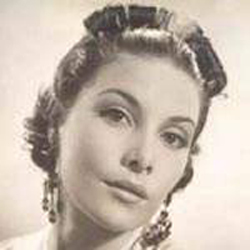
Pearl Argyle was a South African ballet dancer and actress. Remembered today primarily for her extraordinary beauty, she appeared in leading roles with English ballet companies in the 1930s and later performed in stage musicals and in films.
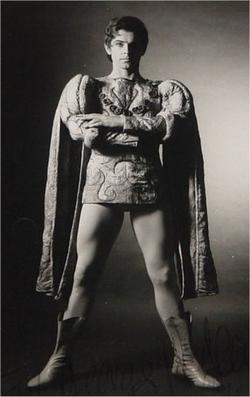
Derek Rencher was a British ballet dancer. A commanding figure among Royal Ballet character dancers for more than four decades, he was probably the most prolific performer in the company's history.
Andrée Howard, originally Andrea, was a British ballet dancer and choreographer. She created over 30 ballets, of which almost nothing remains.
Harold Turner was an English ballet dancer, teacher, and ballet master. Widely recognized as "modern British ballet's first male virtuoso," he had an illustrious career as a principal dancer, after which he continued to perform in character roles. He is acknowledged as a key figure in British dance history.
Alexis Rassine was a South African ballet dancer who enjoyed his greatest success with the Sadler's Wells Ballet in England in the 1940s and early 1950s. He is remembered as a classical dancer who made "a major contribution to British ballet" during wartime and "helped to keep the flag flying when all about was chaos and disaster."